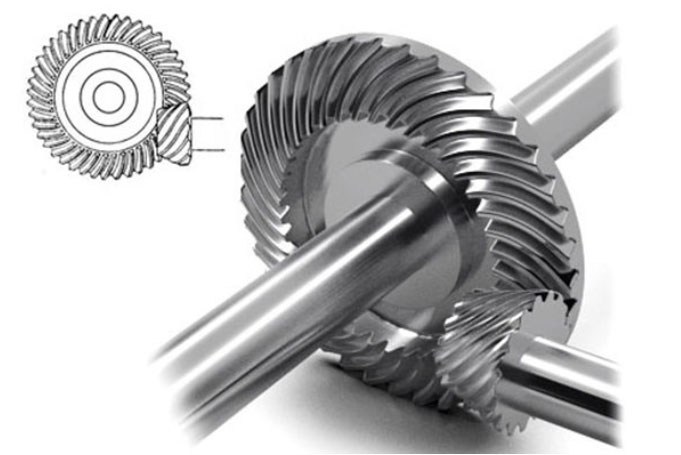Hypoid gears play a crucial role in robotics by enabling precise motion control in various robotic applications. The unique design and characteristics of hypoid gears make them well-suited for meeting the demanding requirements of robotic systems. Let’s explore how hypoid gears contribute to precise motion control in robotics.

- High Torque Transmission: Hypoid gears are capable of transmitting high torque, making them suitable for applications that require powerful and precise motion control. Robotic systems often involve handling heavy loads or performing tasks that require significant force, such as industrial automation or material handling. Hypoid gears can efficiently transfer torque from the motor to the robotic joints or manipulators, enabling precise and controlled movements.
- Compact Design: Hypoid gears offer a compact form factor, allowing for efficient space utilization in robotic systems. Their offset shaft alignment allows for more flexibility in the placement of components, making it easier to integrate them into the confined spaces of robotic joints or gearboxes. This compact design contributes to overall miniaturization of robotic systems while maintaining high torque capacity.
- Precision and Accuracy: Hypoid gears are known for their high precision and accuracy, which are crucial for achieving precise motion control in robotics. The tooth profile and offset shaft alignment result in smooth gear meshing and minimized backlash, ensuring accurate positioning and repeatability. This precision enables robots to perform tasks with high accuracy, such as assembly operations, robotic surgery, or intricate manipulations.
- Low Backlash: Backlash refers to the clearance between gear teeth and is a significant factor affecting motion control accuracy in robotics. Hypoid gears exhibit low backlash due to their tooth geometry and offset shaft alignment. The reduced backlash ensures minimal lost motion and precise control over the robot’s movements, contributing to improved accuracy and responsiveness.
- Quiet Operation: Noise reduction is essential in robotics, particularly in applications where robots interact closely with humans or operate in noise-sensitive environments. Hypoid gears are known for their quiet operation compared to other gear types. The offset shaft alignment and curved tooth surfaces help distribute loads and minimize gear meshing noise and vibrations. This quiet operation enhances the overall user experience and reduces noise pollution in robotic workspaces.
- Durability and Reliability: Robotic systems often operate continuously or undergo repetitive movements, placing significant stress on the gears. Hypoid gears are designed to be durable and reliable, with robust construction and high-quality materials. Their ability to handle high torque loads, resist wear, and withstand harsh operating conditions ensures long-term performance and reliability in robotics applications.
- Versatility: Hypoid gears can be adapted to various types of robotic systems, including industrial robots, collaborative robots, service robots, and more. Their versatility allows them to be employed in different joint configurations, such as revolute, spherical, or parallel mechanisms, enabling precise motion control in a wide range of robotic applications.
In summary, hypoid gears are instrumental in enabling precise motion control in robotics. Their high torque transmission, compact design, precision, low backlash, quiet operation, durability, and versatility make them ideal for robotic systems. Whether in industrial automation, medical robotics, or other robotic applications, hypoid gears provide the necessary power transmission and accuracy to facilitate precise and controlled movements, enhancing the performance and capabilities of robots in various industries.
